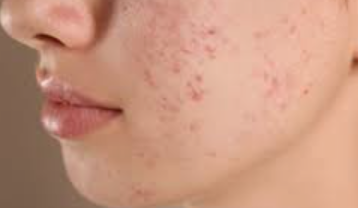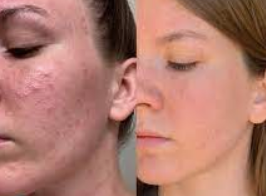Managing fungal acne is all about making the right choices, especially when it comes to your moisturizer.
When it comes to acne, not all pimples are created equal. You’ve probably heard of regular acne, but what about fungal acne? It’s a bit of a hidden beast, often mistaken for its more common counterpart, but in reality, fungal acne requires a unique, specialized skincare routine. Enter one of the most crucial players in any regimen: moisturizer. While moisturizing is essential for all skin types, when you’re battling fungal acne, the right moisturizer can make or break your routine.
But here's the catch—choosing a moisturizer for fungal acne isn’t as straightforward as picking up any old jar of cream from the drugstore. Many moisturizers contain oils, emollients, or fatty acids that might aggravate fungal acne, causing it to flare up rather than soothe. So, how do you find the perfect product for your sensitive, yeast-prone skin? Let’s dive in and explore everything you need to know about fungal acne-safe moisturizers and how they can help you regain control over your skin.
BUY Top Fungal Acne Safe Moisturizers in AMAZON
What Is Fungal Acne?
Fungal acne, also known as Malassezia folliculitis, is a skin condition that occurs when a naturally occurring yeast—Malassezia—overgrows in the hair follicles. This overgrowth leads to tiny, itchy pustules and pimples, often mistaken for regular acne. The most common areas affected are the chest, back, shoulders, and even the face, and while they may look similar to common acne, the treatment is vastly different.
Unlike bacterial acne, which is caused by clogged pores and an overproduction of sebum, fungal acne is triggered by an imbalance of yeast on the skin. This pesky yeast thrives in warm, humid environments, and products that aren’t suited for fungal acne can make matters worse. If you’re already dealing with this frustrating condition, choosing the right skincare products becomes even more important.
Symptoms of Fungal Acne: What to Watch For
Fungal acne can sometimes be tricky to identify. After all, it shares some visual similarities with regular acne. However, there are key differences that set fungal acne apart:
-
Small, uniform pimples: These pimples are usually itchy and present in clusters. They look more like pustules rather than the typical whiteheads or blackheads associated with regular acne.
-
Location: You’re most likely to see fungal acne on your chest, back, shoulders, and sometimes the forehead. It tends to pop up in areas where sweat accumulates or where there’s friction.
-
Itchiness: Unlike regular acne, fungal acne is often accompanied by a noticeable itch or irritation, making it feel like a pesky rash.
-
No blackheads or whiteheads: Fungal acne doesn’t have the same comedones (clogged pores) that you’d typically see with bacterial acne. There’s no pore-blocking action here.
If you’re seeing any of these signs, it’s essential to consult a dermatologist to confirm whether it’s fungal acne or another type of skin condition. The treatment methods vary greatly, and self-diagnosis can sometimes lead to ineffective or worsening results.
Fungal Acne and Skincare: Why It Requires Special Attention
Now, let’s address the elephant in the room: the skincare products we use daily. Here’s the thing—most of the common skincare products that work wonders for regular acne can actually aggravate fungal acne. Certain oils, fatty acids, and esters can feed the yeast and exacerbate the problem. But moisturizers are essential for all skin types, so how do you find one that hydrates without triggering fungal acne flare-ups?
The key is knowing which ingredients won’t feed the yeast and understanding how moisturizers play a role in keeping the skin hydrated without worsening your condition.
What Makes a Moisturizer Safe for Fungal Acne?
A fungal acne-safe moisturizer is more than just a pretty jar of cream—it’s a carefully curated formula that won’t make your fungal acne worse. These moisturizers are formulated to avoid the types of ingredients that feed Malassezia yeast. Typically, fungal acne-safe moisturizers are oil-free and non-comedogenic (meaning they won’t clog your pores). Let's break down the key characteristics of a good fungal acne-safe moisturizer:
1. Non-Comedogenic
"Non-comedogenic" is a fancy term for products that won’t clog your pores. For fungal acne, this is especially important. Why? Because clogged pores can create the perfect environment for Malassezia yeast to thrive. Opting for a moisturizer that’s labeled non-comedogenic ensures that it won’t block your pores, allowing your skin to breathe and stay clear.
2. Oil-Free and Lightweight
If you have fungal acne, you’ll want to avoid oils at all costs. Oils like coconut oil, shea butter, and olive oil contain fatty acids that actually feed the yeast, making your fungal acne flare-ups even worse. Instead, go for lightweight, oil-free moisturizers that hydrate the skin without providing extra nourishment for the yeast. A water-based moisturizer is usually the safest bet for fungal acne.
3. Free from Esters and Fatty Acids
Many fatty acids and esters, which are commonly found in oils, are known culprits for exacerbating fungal acne. Ingredients such as lanolin, myristate, oleate, and stearate can feed Malassezia, promoting its growth. Therefore, always check the ingredient list of your moisturizer and avoid products containing these potentially problematic ingredients.
4. Antifungal Ingredients
Some moisturizers go the extra mile by including ingredients with natural antifungal properties. These ingredients can help manage and even reduce the overgrowth of Malassezia. Examples include zinc pyrithione, ketoconazole, and sulfur. They not only help keep the yeast in check but also reduce the inflammation associated with fungal acne.
5. Hydrating Yet Gentle
While it’s essential to avoid oils and fatty acids, fungal acne-safe moisturizers still need to provide ample hydration. Look for gentle, non-irritating ingredients like glycerin, hyaluronic acid, and panthenol. These ingredients help keep your skin moisturized without aggravating your acne or causing pore blockages.
Best Fungal Acne-Safe Moisturizers
Now that we understand the key ingredients and characteristics that make a moisturizer safe for fungal acne, let’s explore some of the best options available. These moisturizers are formulated to hydrate the skin while keeping fungal acne under control.
BUY CeraVe Daily Moisturizing Lotion in AMAZON
1. CeraVe Daily Moisturizing Lotion
CeraVe is a go-to brand for many skincare enthusiasts, and for good reason. The Daily Moisturizing Lotion is lightweight, non-comedogenic, and packed with hyaluronic acid and ceramides—two ingredients that work together to restore and maintain the skin’s natural barrier. This oil-free formula is perfect for fungal acne sufferers looking for a reliable, daily hydrator.
BUY La Roche-Posay Toleriane Double Repair Face Moisturizer in AMAZON
2. La Roche-Posay Toleriane Double Repair Face Moisturizer
If you have sensitive, fungal acne-prone skin, La Roche-Posay’s Toleriane Double Repair Face Moisturizer is a dream come true. It’s oil-free, fragrance-free, and contains niacinamide to calm irritation. Plus, its formula includes glycerin, which helps lock in moisture without feeding the yeast.
BUY Neutrogena Hydro Boost Water Gel in AMAZON
3. Neutrogena Hydro Boost Water Gel
This lightweight, gel-based moisturizer is packed with hyaluronic acid to deliver hydration without clogging pores. Its oil-free formula absorbs quickly into the skin, leaving no greasy residue behind. Perfect for those with oily or combination skin types dealing with fungal acne.
BUY Eucerin Advanced Repair Cream in AMAZON4. Eucerin Advanced Repair Cream
Eucerin’s Advanced Repair Cream is formulated to repair and hydrate dry, sensitive skin without clogging pores. It’s fragrance-free, fast-absorbing, and packed with ceramides and glycerin, which help maintain the skin’s moisture balance while strengthening the skin barrier. It’s an excellent option for fungal acne sufferers.
BUY EltaMD AM Therapy Facial Moisturizer in AMAZON5. EltaMD AM Therapy Facial Moisturizer
EltaMD is known for creating gentle, effective skincare products, and their AM Therapy Facial Moisturizer is no exception. This lightweight, oil-free moisturizer includes niacinamide to reduce redness and irritation, making it a great choice for sensitive and fungal acne-prone skin. Plus, it’s non-comedogenic, so you can rest easy knowing it won’t make your acne worse.
Ingredients to Avoid in Fungal Acne Moisturizers
When you’re shopping for a moisturizer for fungal acne, knowing what to avoid is just as important as knowing what to look for. Here’s a quick rundown of ingredients that should be avoided:
1. Oils
As previously mentioned, oils like coconut oil, olive oil, almond oil, and avocado oil can feed Malassezia and exacerbate fungal acne. Steer clear of these oils, as they’re rich in fatty acids that yeast thrive on.
2. Esters and Fatty Acids
Fatty acids and esters, such as myristate, stearate, laurate, and oleate, are known to worsen fungal acne. Check your product labels and avoid any that contain these ingredients.
3. Fragrance and Alcohol
Both fragrances and alcohols can irritate the skin and disrupt its natural barrier. Alcohol can also dry out the skin, which may encourage excess oil production—a big no-no for fungal acne.
4. Lanolin
Lanolin is derived from sheep’s wool and is commonly used as an emollient in moisturizers. However, its fatty acid content can promote the growth of Malassezia, making it unsuitable for fungal acne sufferers.
How to Incorporate Fungal Acne Safe Moisturizers Into Your Routine
To get the most out of your fungal acne-safe moisturizer, make sure to integrate it into a well-rounded skincare routine. Here’s a quick step-by-step guide to using it effectively:
-
Cleanse Gently: Use a mild, non-foaming cleanser free from oils and harsh ingredients. A gentle salicylic acid or benzoyl peroxide cleanser can help clear up fungal acne without feeding the yeast.
-
Apply Treatment Products: If you’ve been prescribed an antifungal treatment, apply it first. Look for products with ketoconazole or zinc pyrithione to target fungal acne directly.
-
Moisturize Regularly: After your treatment, apply your fungal acne-safe moisturizer to lock in hydration and restore your skin’s barrier.
-
Sun Protection: Don’t forget sunscreen! Fungal acne treatments can make your skin more sensitive to the sun, so always use a lightweight, non-comedogenic sunscreen to protect your skin.
Conclusion
Managing fungal acne is all about making the right choices, especially when it comes to your moisturizer. By selecting the right product—lightweight, non-comedogenic, and free of oils and fatty acids—you can keep your skin hydrated and balanced without aggravating your fungal acne. Remember to check ingredients carefully and incorporate antifungal treatments as needed.
With the right skincare routine, including the perfect moisturizer, you can keep fungal acne under control and maintain clear, healthy skin. So, take your skincare game to the next level, and embrace the power of fungal acne-safe moisturizers. Your skin will thank you for it.












